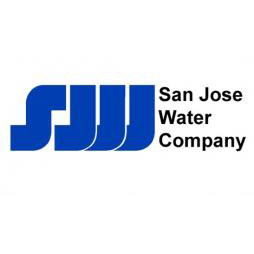Contrary to many media reports, a new report released in late March by the Public Policy Institute of California (PPIC) affirms that California’s water supply and wastewater providers are performing reasonably well – providing safe, reliable levels of service and preparing for future needs. The report notes that these utilities, including government-owned water agencies and water utilities regulated by the California Public Utilities Commission, are almost entirely locally funded and account for 84 percent of the $30.4 billion California invested annually on water and wastewater service, flood management, aquatic ecosystem management and debt service on general obligation water bonds. To date, PPIC says, they have generally been able to raise rates to be able to comply with new treatment requirements and replace aging infrastructure.
However, the new financial challenges are daunting. Rising regulatory standards carry new costs, and water supply, not only that shipped through the Sacramento–San Joaquin Delta but all sources, remains at risk. From the perspective of fiscal health, a significant concern according to PPIC is the potential for Proposition 218 to stymie the public agencies’ ability to pursue the modern water management techniques needed to maintain reliable water service in the face of population growth, climate change and increasing water scarcity. Fortunately, this is not an impediment for Commission-regulated water utilities, who have greater access to capital through equity markets, more investment flexibility and a greater willingness to invest.
The report goes on to identify critical funding gaps in five key areas of water management: safe drinking water for small, disadvantaged communities; flood protection; management of stormwater and other polluted runoff; aquatic ecosystem management; and integrated water management. The report identifies the overall funding gap in these five areas at $2 billion to $3 billion annually. Filling this gap would require a spending increase of 7 to 10 percent – or $150 to $230 per household – for a (statewide) water system that already has annual spending of more than $30 billion.
The report spends considerable time on water rate affordability, noting that the generally accepted threshold for affordability – a water bill that requires less than 2 percent of household income – is becoming increasingly difficult to maintain. Statewide, PPIC says, the share of single-family households that may already face water bills exceeding 2 percent of their annual incomes is nearly 13 percent. The lowest-income households (with annual incomes at or below $25,000) are potentially affected in most counties in the state, and lower-middle-income households (with annual incomes between $25,000 and $50,000) also are affected in counties where water rates are especially high such as Santa Barbara. The report notes that the state will clearly need to consider affordability for lower-income households as water bills continue to rise, even though water is still highly affordable for the vast majority of California’s households and businesses.
Finally, PPIC addresses an issue that Assembly Member Henry Perea (D-Fresno) is wrestling with in his bill, AB 1527, water consolidation for disadvantaged communities. PPIC’s report covers both physical consolidation and administrative consolidation of utilities and states that the latter – with combined management and technical oversight – may also help reduce costs and improve performance, especially where physical consolidation is impractical. The report notes the obstacles associated with consolidation, one of which is that substantial sums have been available to support safe drinking water delivery under numerous state and federal programs, but this funding often is difficult for small systems to access because of their limited organizational capacity.
Moreover, most funds, including those specially earmarked for small systems, have been restricted to capital improvements rather than the ongoing operations and maintenance support these systems often need. Some of these gaps could be addressed through better organization of existing funding programs, including creating a single application for the numerous funding programs. Perhaps most important to facilitating physical and administrative consolidation would be indemnifying utilities that agree to annex small systems from potential liabilities for preexisting problems. This is one measure CWA hopes can be included in AB 1527. It would go a long way toward helping customers in those communities with distressed water systems.
The full report can be accessed at http://www.ppic.org/main/publication.asp?i=1086.





